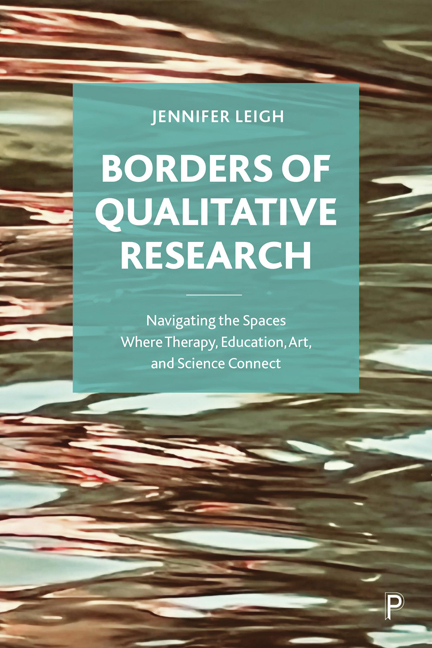 Borders of Qualitative Research
Borders of Qualitative Research Case Study 4 - Working with scientists
Published online by Cambridge University Press: 28 March 2024
Summary
This case study of my work with the international WISC network exemplifies the borders of qualitative research with science and therapy. Integrating and using qualitative research methods – explicitly embodied, creative, and reflective research methods – with scientists and in a scientific context allowed us all the opportunity to reflect on the ways in which research approaches and dissemination are defined by disciplinary boundaries. My work with international Principal Investigators and research groups felt at times like either teaching or group therapy, and definitely required my full set of therapeutic skills and holding, particularly as the bulk of the work was undertaken online throughout the COVID-19 pandemic.
Context
In the very first chapter of this book, I shared the story of how I came to qualitative research after initially studying chemistry at both undergraduate and postgraduate levels. That I ended up leaving science is unfortunately all too common. Women are marginalised in chemistry (Royal Society of Chemistry 2018), with the largest attrition occurring post-PhD (Royal Society of Chemistry 2019a). Although I left during a PhD and not after completion, I contribute to the statistics around the lack of retention for women and other marginalised groups. Those that choose to stay continue to have challenges. The Royal Society of Chemistry (RSC) recognised that women in the chemical sciences face barriers in publishing (Royal Society of Chemistry 2019b), which can be thought of as akin to microaggressions as defined by Sara Ahmed (2017). Even before the COVID-19 pandemic impacted women academics to a greater extent than men due to uneven loads of caring responsibilities and work distribution (Gabster et al 2020), the RSC stated that the rate of change meant gender parity would never be reached (Royal Society of Chemistry 2019a). The chemical sciences are not unique in this. The scientific community is not known for its diversity with respect to gender (Greider et al 2019), race (Makgoba 2020), sexuality (Smith 2020), or disability (CRAC 2020). Of course, the barriers that face an individual with a protected characteristic are intersectional (Crenshaw 1989) and compound.
The international WISC network was initially created to support a small group, before being scaled to build an intersectional sense of community supporting the retention and progression of women in the field.
- Type
- Chapter
- Information
- Borders of Qualitative ResearchNavigating the Spaces Where Therapy, Education, Art, and Science Connect, pp. 191 - 206Publisher: Bristol University PressPrint publication year: 2023


